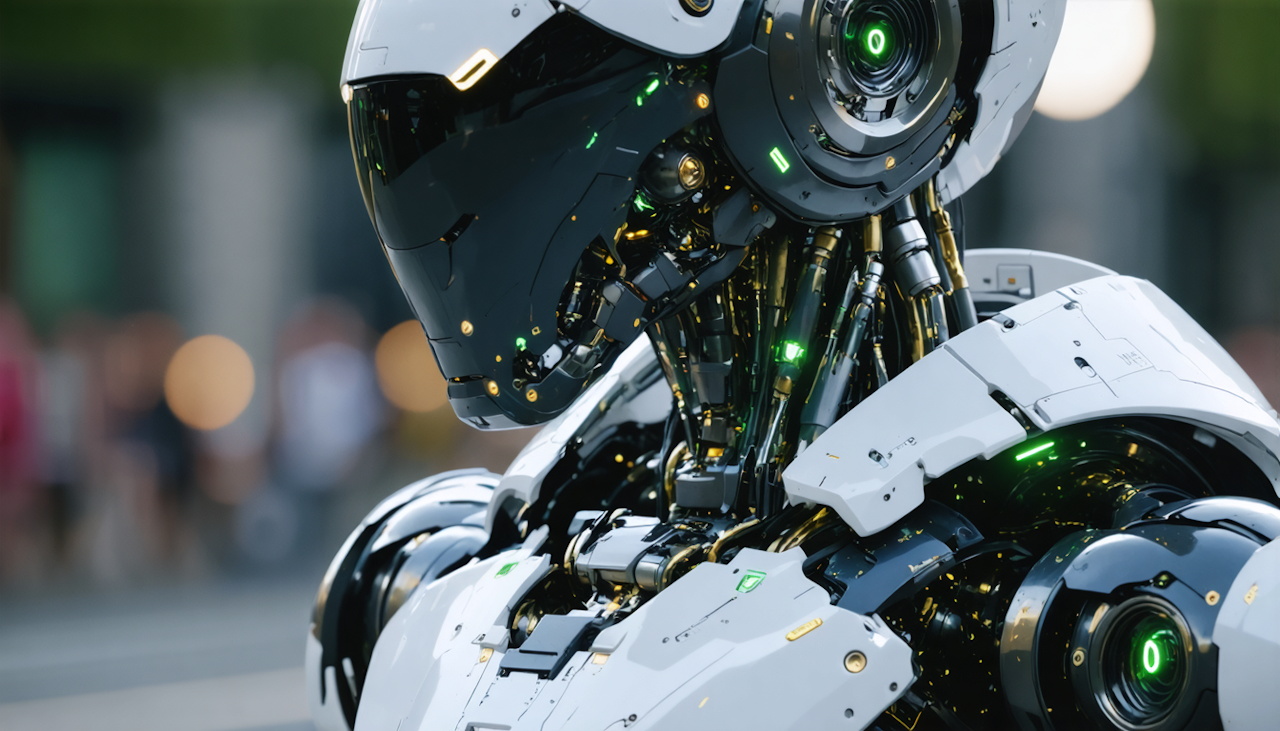In the world of technological wonders, we’ve previously covered the application of AI in robotics. Humanoid robots are swiftly becoming the stars of the show, dazzling us with displays that seem plucked from the realm of science fiction. With innovations by companies like Tesla and Realbotix, humanoid robots are not merely gaining attention—they are redefining our perceptions of what machines can achieve, hinting at a future where multitasking man-machines might share our workloads and redefine our daily lives.
Recent Developments in Humanoid Robotics
Leading this robotic renaissance is Tesla’s latest version of the Optimus robot. The 2025 demonstrations reveal a machine capable of mimicking human-like movements, such as walking on uneven surfaces and identifying obstacles with precision, courtesy of its advanced automation technologies. This showcases a significant leap forward in AI-human symbiosis, with Optimus embodying a versatile helper that could soon handle repetitive or unsafe tasks in various industries. More details on its capabilities have been shared here.
On the other hand, Realbotix’s Aria, unveiled at CES 2025, is bringing a unique twist to the humanoid saga. Designed with intimate, AI-driven interactions in mind, Aria can express emotions and engage in lifelike conversations. With 17 motors finely tuning her facial expressions, Aria delivers a remarkable illusion of sentience, marking a new era in realistic humanoid companionship and redefining what we envisage as robotic interaction here.
Key Players in the Humanoid Robot Sector
Tesla and Realbotix aren’t alone in this surge; they are part of an expanding collective of pioneers revolutionising the robotics landscape. Other key players are also pushing boundaries in industrial automation, healthcare, and personal companionship applications. These companies’ efforts are enhancing our understanding of AI’s potential and introducing versatile applications that challenge the norms of human-robot collaboration here.
An important factor in their success lies in strategic partnerships and technological collaborations. These alliances are not only quickening the pace of development but also enabling broader deployment scenarios, ensuring that these robotic creations meet diverse societal needs.
Societal Implications and Ethical Considerations
However, with great power comes great responsibility—and great debate. The prospect of humanoid robots carrying out tasks traditionally handled by humans raises questions about job displacement and privacy here. While these robots promise increased efficiencies, especially in sectors like manufacturing and healthcare, the ethical dilemmas they introduce cannot be overlooked. The balance between technological advancement and ethical boundaries must be carefully navigated to ensure societal gains don’t come at the cost of individual livelihoods or privacy.
On the flip side, these robots could be the answer to managing ageing populations globally, providing care and assistance in ways that were once the preserve of human carers. The possibilities are endless; however, addressing public concerns is pivotal to their successful integration into society.
Future Prospects of Humanoid Robots
Imagine a world in 2030 where humanoid robots are as common in offices as computers are today. The potential for these machines to revolutionise industries is immense, ranging from construction to customer service roles, challenging us to rethink traditional roles and workspace dynamics. This anticipated shift underscores the urgency with which we must consider technological trends and innovations that may fast-track their ubiquity and utility here.
The trajectory of humanoid robots is set to spark heated debates, rich with possibilities as well as pitfalls. To realise its benefits fully, a clear understanding of these technologies and their societal impacts is imperative. Engaging with these trends can help guide us toward a future where AI-human interactions are not just productive, but enriching.
Delicate Dance
In the end, humanoid robots are not just machines; they are milestones in our ongoing quest for technological mastery, offering both unprecedented opportunities and formidable challenges. As these entities infiltrate our daily lives, the delicate dance between innovation and ethics will dictate whether they become our allies or adversaries in the pursuit of progress. Embracing these changes with an informed mindset is key to unlocking their full potential while safeguarding against unintended consequences.
In Other News…
Veo 2: A Premium AI Video Model Google has revealed that Veo 2, a new AI video model, charges 50 cents per second—a notably high price compared to competing solutions. Despite the premium cost, Veo 2 delivers advanced video editing, analysis, and generation capabilities, targeting enterprises that demand cutting-edge, robust multimedia processing tools for high-quality production performance.
TechCrunch
MIT’s Cutting-Edge AI Research:
Researchers at MIT are pushing the envelope—from systems that predict protein fragments for therapeutic applications to studies revealing how large language models reason about diverse data. These breakthroughs are not only advancing our scientific understanding but also paving the way for transformative applications in health, climate, and beyond.
MIT
The New York Times Integrates AI Tools:
In an effort to enhance efficiency, The New York Times has rolled out internal AI tools for tasks such as editing, summarizing, and coding. New guidelines ensure that while AI assists in the process, final editorial control remains firmly in human hands.
TheVerge
Nvidia’s Sales Forecast Amidst AI Competition:
Despite a significant valuation dip caused by emerging competitors like the Chinese startup DeepSeek, Nvidia is forecast to see a 72% sales increase in the upcoming quarter. Analysts remain cautiously optimistic as the chipmaker navigates competitive pressures and technological challenges.
The Times


